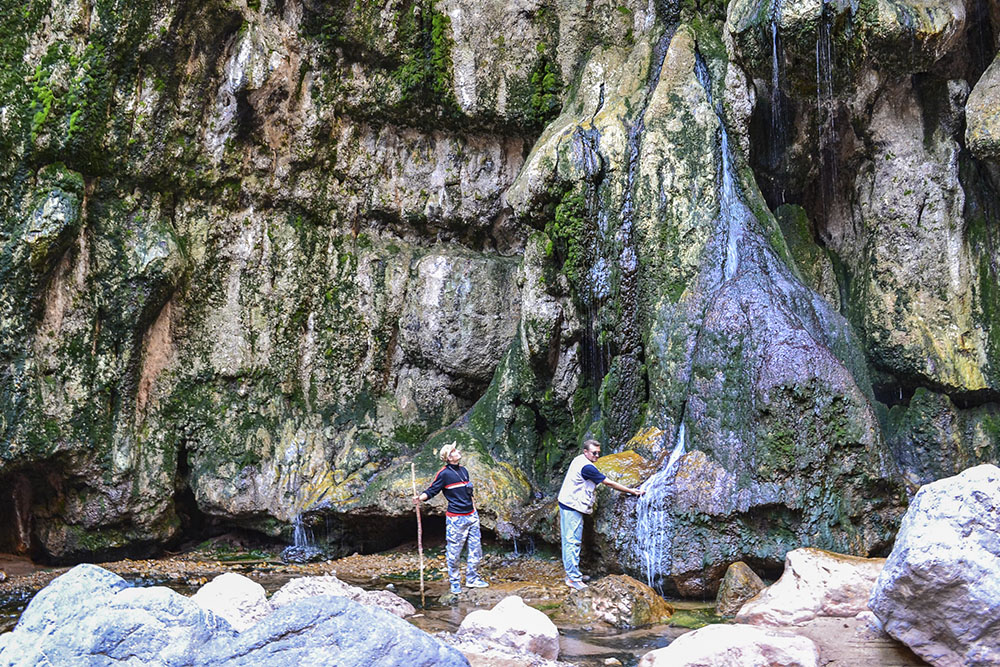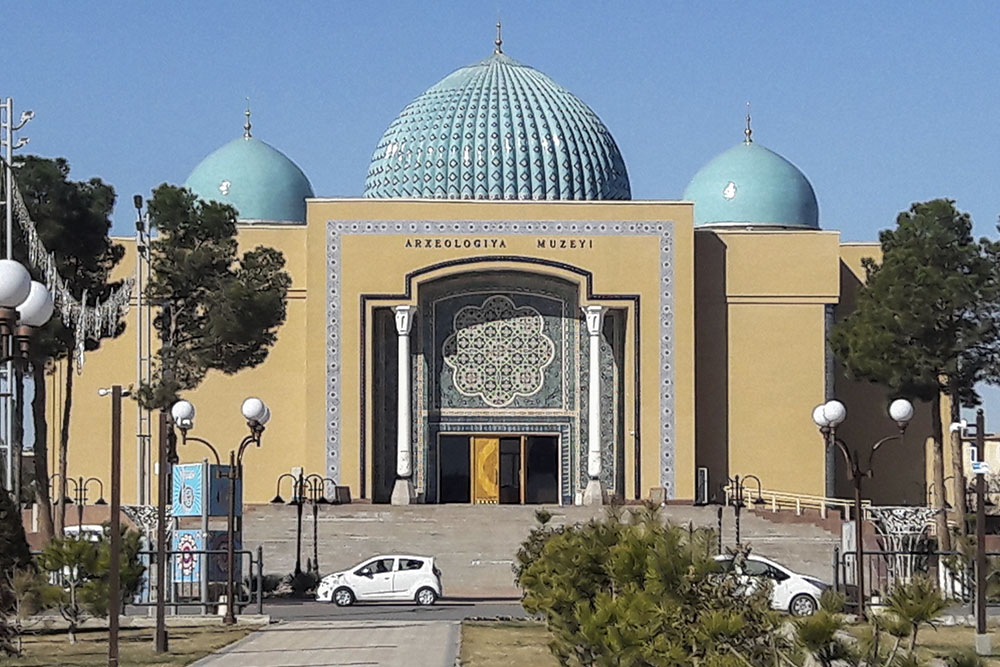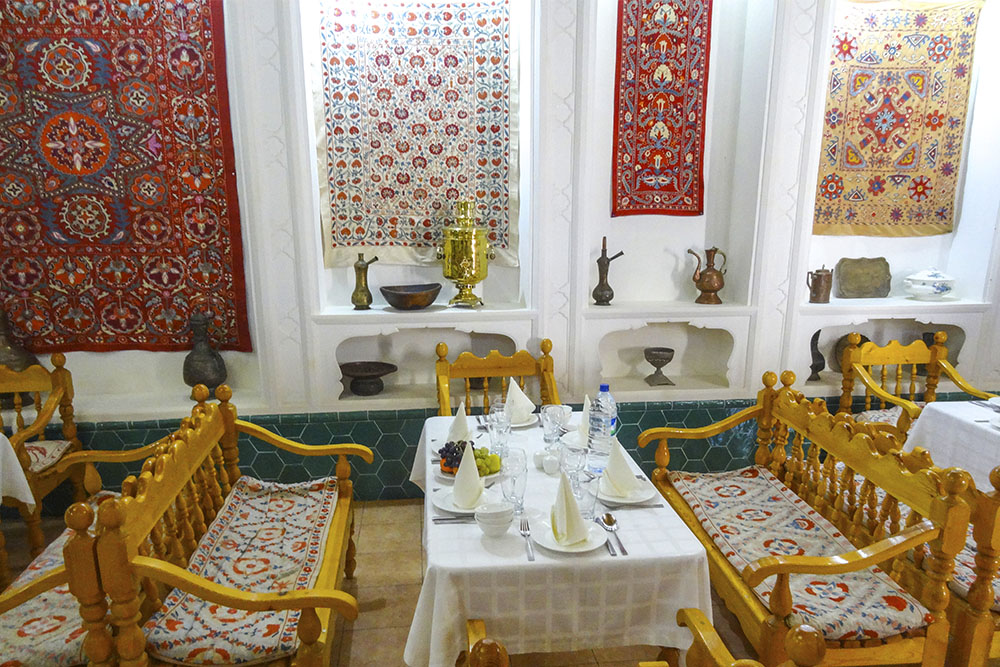The Sultan-Saodat memorial and cultic complex (10th-18th centuries) is the family grave of the Seyids, the ruling dynasty of Termez. The complex consists of a series of mausoleums, mosques and khanqahs, all built of baked bricks. The buildings which were being constructed for 6-7 centuries are grouped around a court 70 m long. The Sultan-Saodat complex occupies an area of about 4 ha and comprises 143 structures.
The most interesting structure is an 11th-century mausoleum in the northernmost part of the complex. This is the tomb of Khasan al Emir, the founder of the Seyid dynasty of Termez. The portal of the square building roofed with a huge dome rises 15 m above the ground and is the highest element of the ensemble. In former times the mausoleum was decorated with glazed tiles. Its dome rests on arches and pendentives made of baked bricks forming the herringbone pattern. The façade is ornamented with pairs of bricks, which are interspersed with fretted ‘bow’ ornaments covered with turquoise glaze. This part of the building also features ‘herringbone’ brickwork, bands of fretted decorative bricks and geometric and plant ornamental patterns.
The youngest of the constructions is the entrance portal at the end of the eastern façade, which was built in the late 17th-early 18th century.







